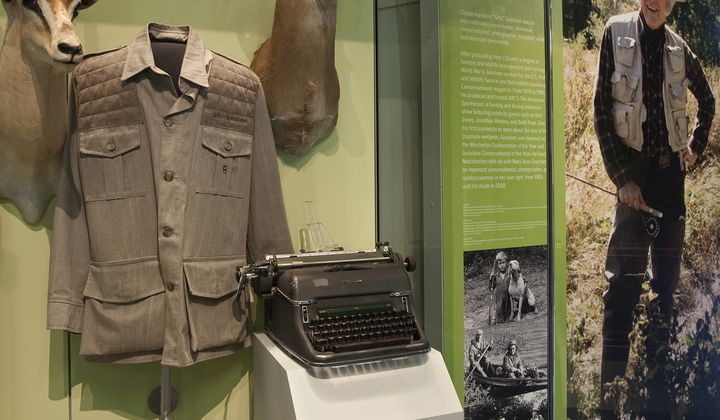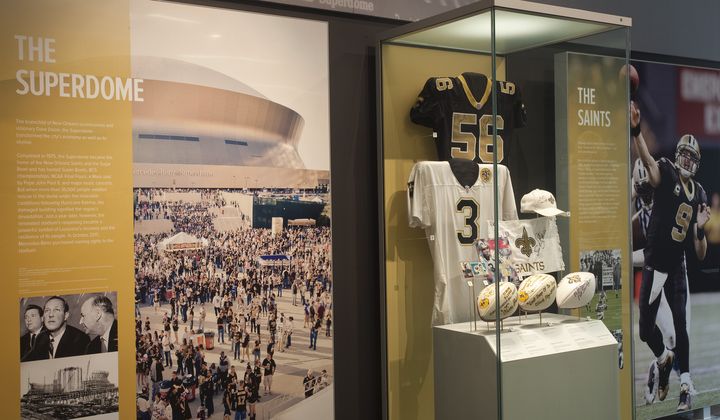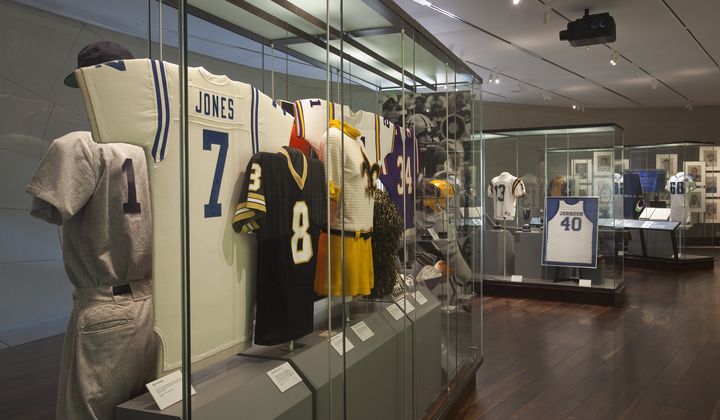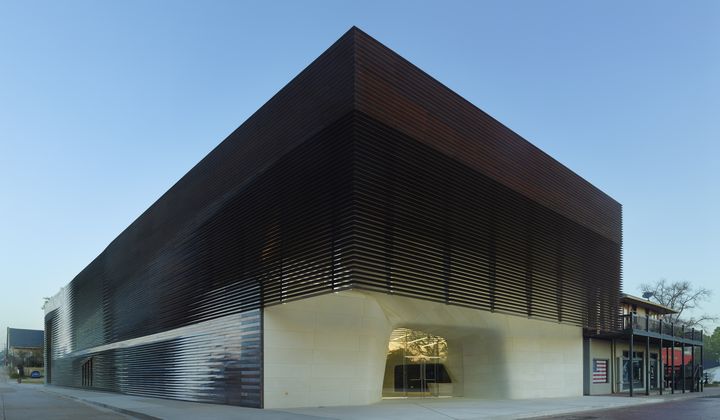Louisiana Sports Hall of Fame and Northwest Louisiana History Museum
800 Front Street, Natchitoches, LA 71457 - United States
Our museum combines two previous Natchitoches museums. The Louisiana Sports Hall of Fame Museum celebrates accomplishments by Louisiana athletes, coaches and sports stars, while the Northwest Louisiana History Museum celebrates the region's culture and history, all in a dazzling museum complex in historic downtown Natchitoches.
The Hall of Fame’s exhibits and interactive media trace the history of Louisiana sports and highlight the importance of sports to life in Louisiana. High-definition videos capture in-game drama and excitement, and touch-screens reveal sports stars’ life stories, career stats and colorful quotes.
Some inductees are household names, such as Archie Manning, Willis Reed, Shaquille O’Neal and Chanda Rubin, but others hold equally important spots in the state’s sporting pantheon. New Orleans-born Audrey “Mickey” Patterson, for example, was the first African-American woman to win an Olympic medal. The Hall of Fame includes the USA jersey she wore when she won the bronze medal in the 200-meter dash at the 1948 games in London.
Pete Maravich’s scrapbook of his years as one of the greatest basketball players to step onto a court, a Super Bowl XLIV commemorative football signed by all 53 New Orleans Saints after their 2010 victory and the fastest car in the world in 1963—a souped-up Ford Thunderbird—are just a few of the artifacts that make the Louisiana Sports Hall of Fame Museum in Natchitoches an up-close, personal and unforgettable fan experience.
The Northwest Louisiana History Museum in Natchitoches brings 3,000 years of history forward to the unique cultural traditions that survive and thrive in the region today.
The museum tells the story of how diverse groups of people—Caddo Indians, French and Spanish settlers, free and enslaved Africans and rural southern whites—created the region’s distinctive culture. With displays of artifacts dating from the 1700s, this museum celebrates the explorers, artists, writers, entrepreneurs and human rights leaders who embodied northwest Louisiana’s resilient spirit.
Exhibits focus on seven major themes. Living Traditions, for example, explores present-day handcrafts, cuisine, social customs and flourishing subcultures, such as the Cane River Creole community of Isle Brevelle, whose origins began in colonial Natchitoches.
Exhibits
From "Big Shots" to Brides: The Portraits of Fonville Winans. A gifted, amiable, and inquisitive photographer, Theodore “Fonville” Winans (1911-1992) had an intuitive eye for composition and an innate ability to connect with his subjects, revealing both their personality and a sense of place.
Winans drove the backroads and navigated the bayous of south Louisiana during the early 1930s. Along his travels, he documented many fascinating aspects of Louisiana culture including the Acadian fishing community of Grand Isle, the Crowley Rice Festival, an annual fox hunt in Feliciana Parish, the interior of a salt mine on Avery Island, and prisoners at Angola State Penitentiary.
After getting married in 1936, Winans and his bride, Helen Collins, settled in Baton Rouge where he would raise a family and make splendid photographs for half a century. Initially, he worked as a state photographer specializing in portraits of elected officials during the tenure of Governor Earl Long. Then, in 1940, he opened his studio on Laurel Street and became a wedding and portrait photographer, known for the friendly thoroughness of his approach. Generations of Baton Rouge brides selected him to document their special day.
Winans achieved an engaging blend of intimacy and revelation not just in his wedding photographs, but in all of his work. And although color photography became more available and popular during his career, he mostly stuck with the familiarity of black and white. An alert and sensitive chronicler of his times, Fonville Winans created a magnificent and monochromatic record of a colorful and complex culture.
In 1994, the Louisiana State Museum acquired the most extensive collection of Fonville Winans photographs, along with camera equipment and memorabilia from Robert L. Winans, the photographer’s son, and Natalia, his daughter-in-law. This comprehensive exhibition includes more than 160 of Winans’ photographs of Louisiana bayous, politicians, citizens, celebrities, and brides, several videos about the photographer and his subjects, and photography equipment from his studio.
Bringing together some of photographer Theodore Fonville Winans' most striking portraits, From "Big Shots" to Brides: The Portraits of Fonville Winans includes a diverse array of portraits, many of which have ties to north and central Louisiana.
Participation in Museum Day is open to any tax-exempt or governmental museum or cultural venue on a voluntary basis. Smithsonian magazine encourages museum visitation, but is not responsible for and does not endorse the content of the participating museums and cultural venues, and does not subsidize museums that participate.






